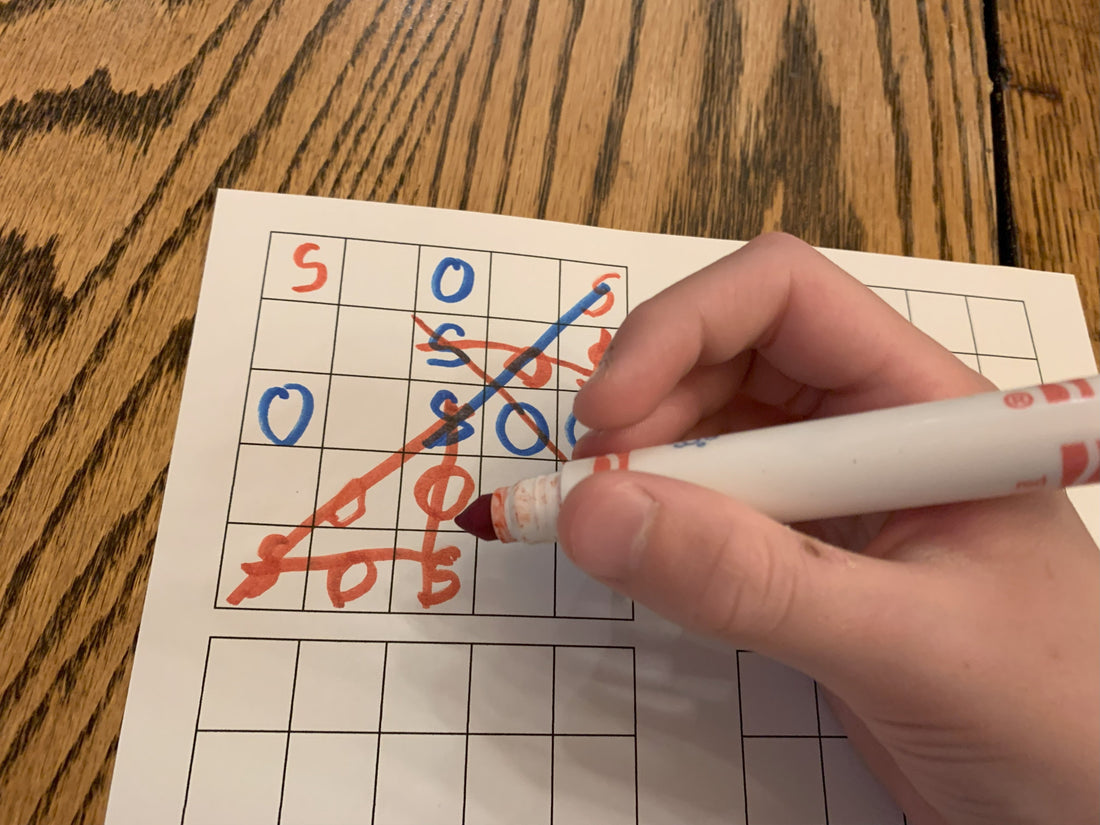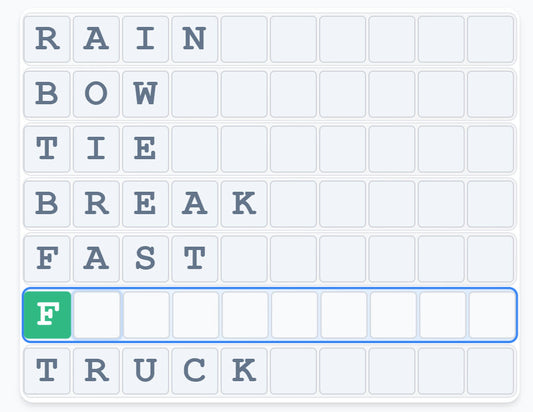
How to Play SOS Game – Rules, Strategies & Variations
Share
SOS is a quick and strategic paper-and-pencil game. Players take turns writing an “S” or an “O” on a grid, trying to make the sequence “SOS” horizontally, vertically, or diagonally.
It’s simple to learn, works with just two people or bigger groups, and can be played anywhere with just paper and pencil.
Objective
Score points by creating as many “SOS” sequences as possible on the grid before it’s full.
Age Range
Ages 6 and up. Younger kids can play casually, while older kids and adults enjoy the strategy of blocking and setting up multiple SOS opportunities.
Game Length
5–15 minutes depending on grid size.
Why We Like It for Kids and Families
- Quick setup – just paper and pencil.
- Scales well – small or large grids work depending on how long you want to play.
- Strategic fun – a balance of offense and defense.
- All ages friendly – kids learn fast, adults stay challenged.
Skills Learned
- Strategic thinking
- Pattern recognition
- Planning ahead
- Spatial awareness
What You Need
- 1+ friends (2 players minimum)
- Paper
- Pencil or pen
- Optional: a ruler for neat grids
How to Play SOS in 8 Steps
Step 1: Gather friends and supplies
Find at least one other player, some paper, and a pencil.
Step 2: Draw the grid
The most common sizes are 5×5 or 6×6. You can play as small as 3×3 for a quick round, or go bigger (7×7, 10×10) for more strategy and game time.
Step 3: Decide who goes first
Pick randomly (coin flip, youngest player, etc.).
Step 4: Place a letter
On your turn, write either an S or an O in any empty square.
Step 5: Alternate turns
Players take turns back and forth unless someone scores (see Step 6).
Step 6: Score SOS
If your move forms “SOS” horizontally, vertically, or diagonally, draw a single line through that SOS to mark it and score 1 point.
Step 7: Bonus turns & live letters
After you score, you get another turn immediately. Letters used in a scored SOS are not dead — they remain on the board and can be reused to make overlapping SOS sequences later.
Step 8: End the game
Play until the grid is full. The player with the most points (SOS sequences) wins.
Rules Summary
- Players alternate turns placing an S or O.
- SOS can be made horizontally, vertically, or diagonally.
- Each SOS = 1 point. Cross it out with a line to mark it.
- Scoring a point gives you another turn.
- Letters remain active and can be reused in overlapping SOS.
- Game ends when all squares are filled.
Variations
- Team Play – Divide into teams, total up scores.
- Big Board – Play on 7×7 or 10×10 grids for more strategy.
- Timed Turns – Use a 10-second timer to keep play moving fast.
- Overlapping SOS – Letters can count toward multiple SOS sequences.
Strategies
- Look for chances to place an O between two S’s.
- Block your opponent if they’re setting up an SOS.
- Plan ahead: one S can set up multiple sequences.
- Middle spaces are powerful on larger boards.
FAQs
Q: Can multiple SOS overlap?
A: Yes. A single letter can count toward more than one SOS. Just cross out each scored sequence with a line.
Q: What grid size works best?
A: 5×5 or 6×6 is the sweet spot, but try bigger for longer games.
Q: Do you have to say “SOS” when you score?
A: Optional — but shouting it makes the game more fun!
Q: Can the game end in a tie?
A: Yes. If players score the same number of SOS, it’s a draw.






